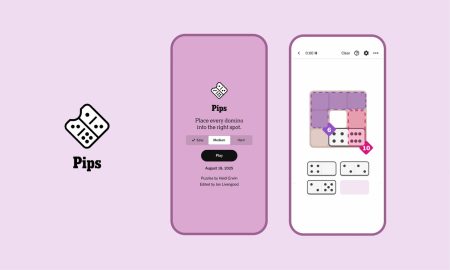Rachel Lyubovitzky is the CEO and Chairwoman at Setuply, Inc. Client Onboarding Automation Platform | Setuply.
We often observe that even the most mature and established B2B solution providers can fall into a common pitfall: hyper-personalization of the onboarding experience, compensating for the lack of a clear, scalable client onboarding process. Companies can become so focused on accommodating each client’s unique requests that they lose sight of profitability, margins, and overall business sustainability. And, while the intention to reinvent the wheel for each client might seem like good customer service, it can actually give the impression that the provider lacks the sophistication or maturity to have a well-established process.
This challenge isn’t limited to early-stage providers; even mature companies can become caught up in this mindset. However well-intentioned it may be, constantly reinventing the wheel can put the business at risk. To ensure sustainable growth and safeguard their reputation, these companies must establish a streamlined, consistent onboarding processes that balances individual client needs with operational efficiency. By recognizing commonalities among clients, building (and maintaining) scalable processes around them and leveraging automation to eliminate inefficiencies, providers can deliver high-quality service while maintaining profitability and growth.
1. Get alignment on everyone’s needs.
Ideally, a streamlined onboarding process should begin with sales. Companies with a truly well-developed process are great at working consultatively, aligning key stakeholders within the client lifecycle chain (clients, onboarding professionals, sales reps, end-users) even before the deal is made. Sometimes, this may involve revalidating or realigning once onboarding has begun, by asking certain questions to the end-users: “Tell me about your business. This is what we learned about during the sales process—is this still the case?”
Sometimes, concrete business objectives may not have been fully established during the sales process, or it may have been months or even years between when the sales process took place and the end-users begin to work with the software. It’s important to ask these users what they feel makes them unique and different, and to learn about their business, in order to understand both their strategic goals with the new solution and their definition of a successful working dynamic.
2. Maintain control of the process.
Sometimes, a solution provider will say (again, very well-meaningly), “We don’t have a standard onboarding process—we just go with what our customers want.” However, we find that this lack of control can really backfire. Imagine going to a French restaurant and being invited into the kitchen to make anything you want. The software vendor or service provider is the expert in their product or service; it doesn’t make sense to invite a client into the kitchen, where they could end up overwhelmed by flaming stove tops, fine utensils, and hundreds of seasoning options. The result is likely to be unsatisfying for everyone involved.
We’ve all had the experience of choosing from an overwhelming menu with endless options for protein, sauce, and veggies, only to end up with a meal that doesn’t quite hit the mark. You leave feeling vaguely frustrated—not just with the meal, but with the establishment itself. Fundamentally, only the chef knows how to create and deliver a dish that aligns with the customer’s dietary and taste preferences. This is why it’s crucial to have an established process and to work consultatively with the client, ensuring that their needs are met at each stage, rather than improvising as you go.
3. Don’t rush to automate.
In the era of Machine Learning (ML), Robotic Process Automation (RPA) and AI, many companies are eager to leverage cutting-edge technology to automate business processes. While this can be highly beneficial, it’s not always the best first step. It’s crucial to establish a solid process first, ensure it functions well and then iterate to improve it; only then can automation elevate it to the next level.
Software companies should invest time in understanding their clients’ true goals—not just what the product can do, but what specific capabilities or business objectives the client hopes to achieve through automation. This approach allows companies to help their clients use software tools optimally and scale their use sustainably across the organization, addressing various processes in the most efficient way possible.
4. Put guardrails around unique requests.
When a client comes in with what they state is a “unique” request, it’s important to bind it with a set of guardrails so that it doesn’t get out of hand. To use the restaurant analogy again: You don’t want to spend six hours working on the perfect meal because the customers cannot wait forever to eat. Moreover, the longer they wait and anticipate this meal, the more likely they are to begin wavering, and saying, “No, I changed my mind…I want my meal cooked this way, or seasoned that way.”
We tend to see that a client’s “unique” request arises not from a meaningful difference from other clients, but rather, from a lack of internal clarity about what they actually want and need. Often, this stems from a change management problem; the client is not yet comfortable with committing to a certain change, so consequently they may waver in their preferences and requests. It is important for software companies to recognize this tendency, and to work closely with clients to understand the reasoning behind change requests, rather than going down the rabbit hole of continually changing the scope.
5. Maintain constant communication.
Throughout the onboarding process, it’s crucial to consistently check in with clients, especially if they’re falling behind on any steps. Implementing a new software system can be overwhelming and confusing; clients often need both guidance through challenging aspects and encouragement when they reach key milestones. Maintaining a warm yet direct line of communication helps sustain the client’s momentum, ensuring they ultimately reach the desired outcome: happily and productively using the new system across their organization.
Consistency is the key to scalability and sustainable growth. Once a process is established, it should consist of well-defined stages that are fundamentally replicable across all clients, while potentially incorporating specifics based on industry, size, or market. This approach reassures clients: “Based on our many successful client outcomes, this is the best way to proceed. However, we are here with you at every step.” For example, many clients will need to migrate historical data when adopting a new software system. Recognizing that this is a common, yet critical, stage, you can create a standardized onboarding process that anticipates this need, prepares end-users, and guides them through it as smoothly as possible. The goal is to help clients quickly regain access to their data within the new system. In some cases, this may involve helping clients “re-map” their existing processes to align with proven methods that will yield the desired results.
While every customer is unique, their problems are generally not. Creating processes to serve them all, while still flexing to their individual pain-points, is the most sustainable way forward; this way, vendors are able to serve many clients well, using lessons learned across similar cases. They can ensure that not only will their solutions get implemented and widely used, but also that their clients will trust them enough to come back again and again.
Forbes Technology Council is an invitation-only community for world-class CIOs, CTOs and technology executives. Do I qualify?
Read the full article here








